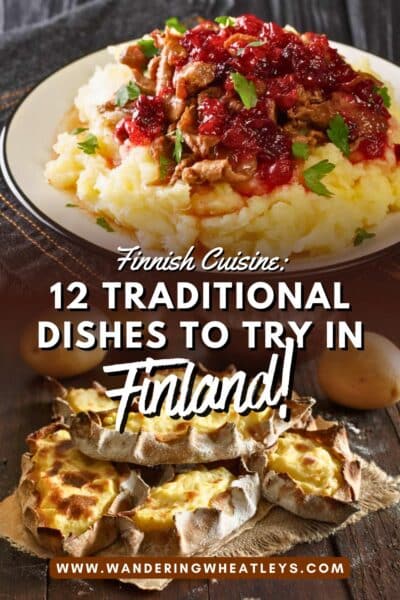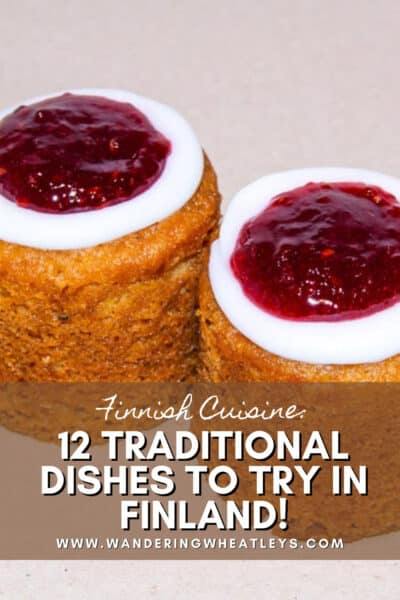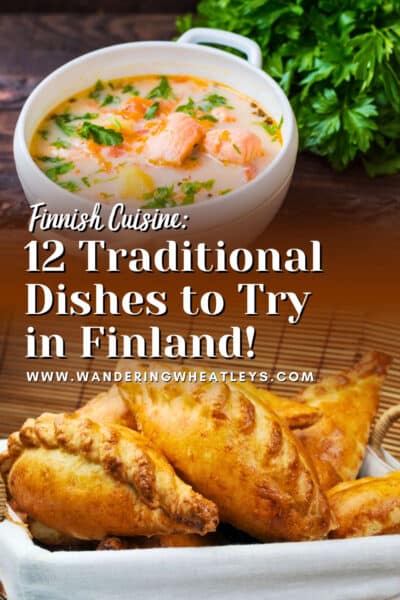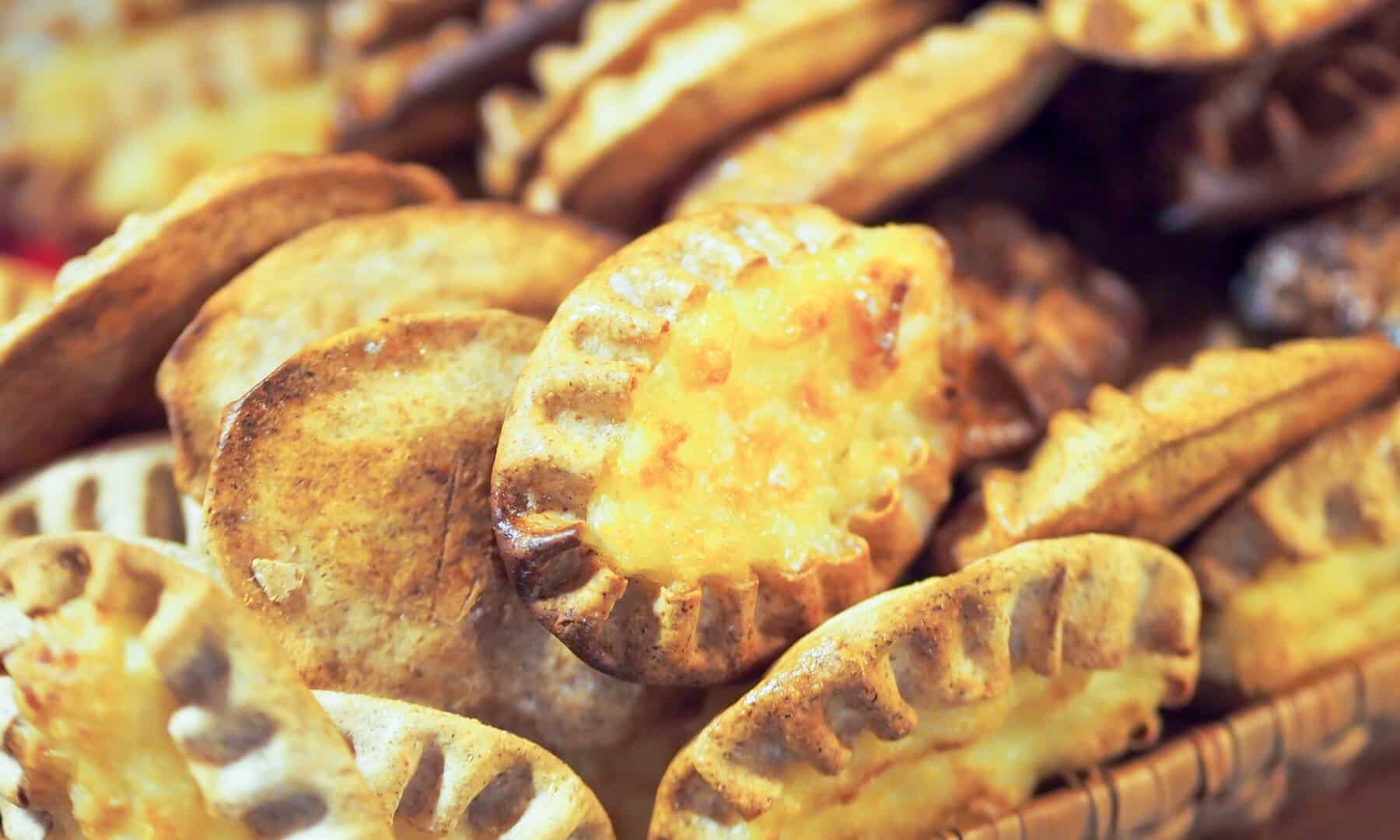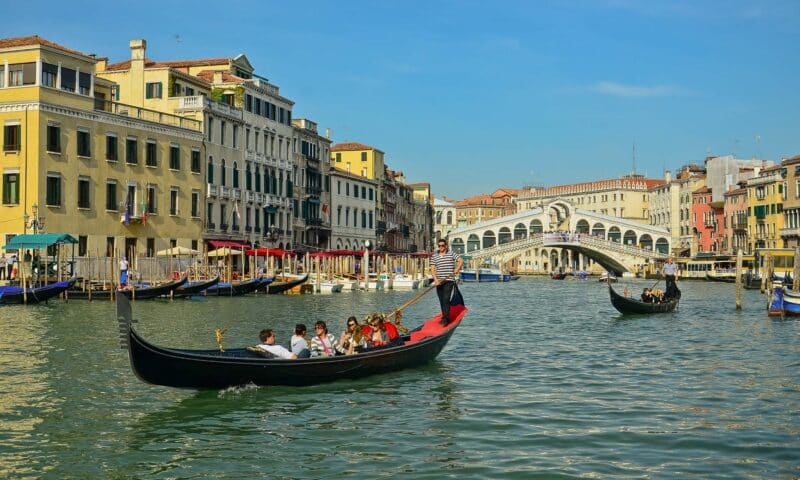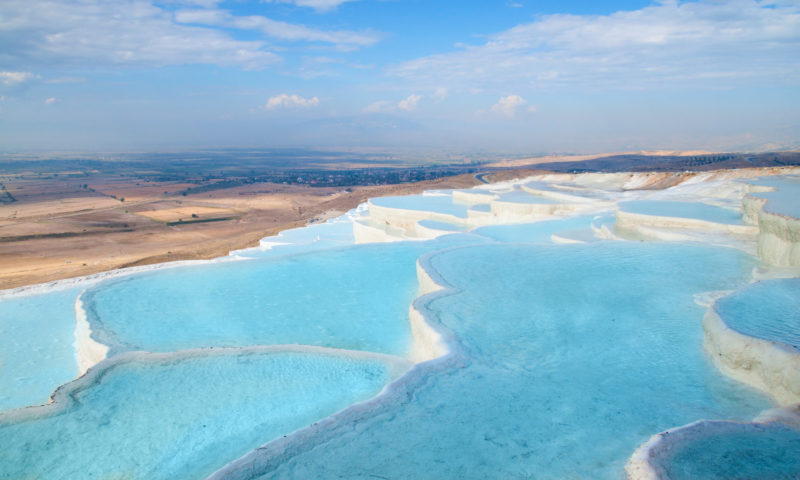Finnish cuisine has a lot of influences. Having only gained autonomy in the early 20th century, this Nordic country’s foods often play on dishes you’ll find in its previous ruling countries, Sweden and Russia.
But there’s plenty of Finnish cuisine that’s all its own. With long, cold winters and rough soil, the Finnish people have managed to find foods that can handle the harsh conditions as well as they can. You’ll also find that traditional Finnish foods tend to be very hearty to help the people survive the difficult conditions as well.
From Lapland to Helsinki, you’ll find unique Finnish foods you won’t see anywhere else. If you’re planning a vacation to this stunning country, we’ve put together a list of the best and most popular Finnish foods to help you eat like a local. From savory dishes to sweet treats, stick to this list, and you’re bound to end your trip feeling full and happy!
Disclaimer: This post may contain affiliate links. If you make a purchase or booking through one of our links we may earn a small commission (don’t worry, it’s at no extra cost to you).
12 Traditional Foods to Try in Finland
1. Karjalanpiirakka
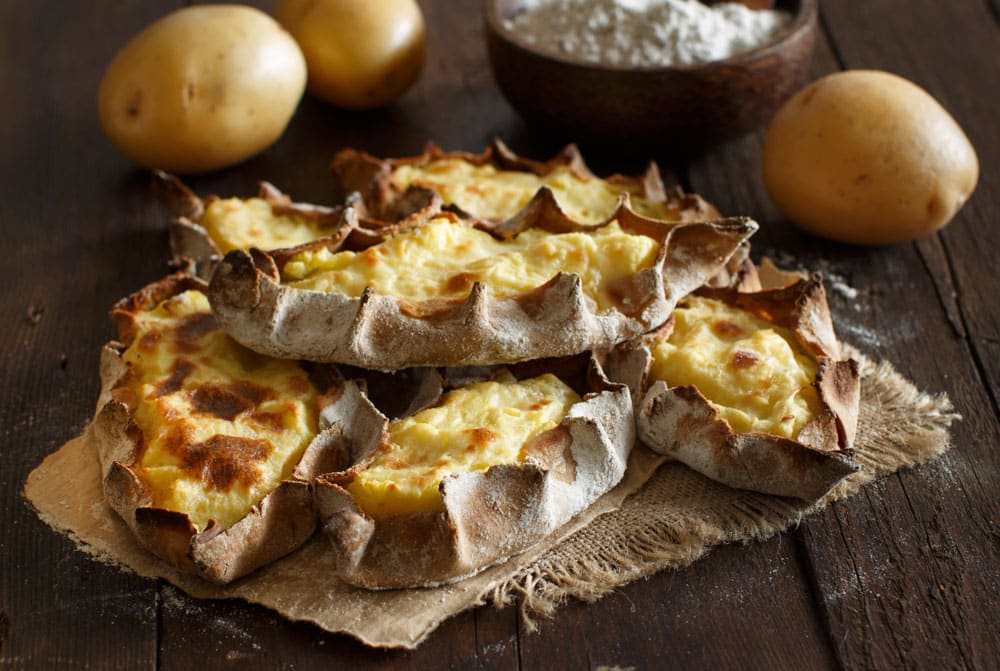
In my family, karjalanpiirakka, or Karelian pie, is a Christmas tradition. Mainly because we love them, but they take a good deal of work, so we all work together to have them for the holidays.
But that’s not the case in Finland. This popular pastry, which hails from the region of Karelia, is absolutely everywhere in Finland. From cafes to street vendors, you’ll find karjalanpiirakka everywhere you look. Made with rye crust, it’s traditionally filled with rice porridge. Then, it’s topped with a mixture of hard-boiled eggs and butter.
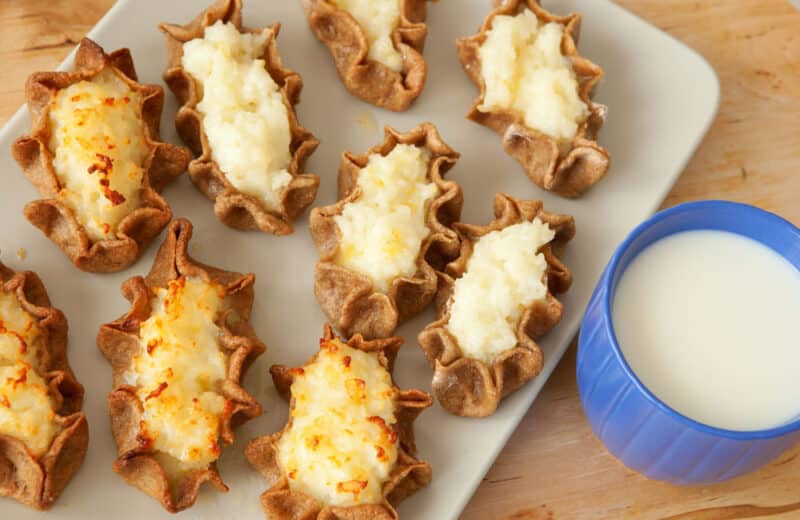
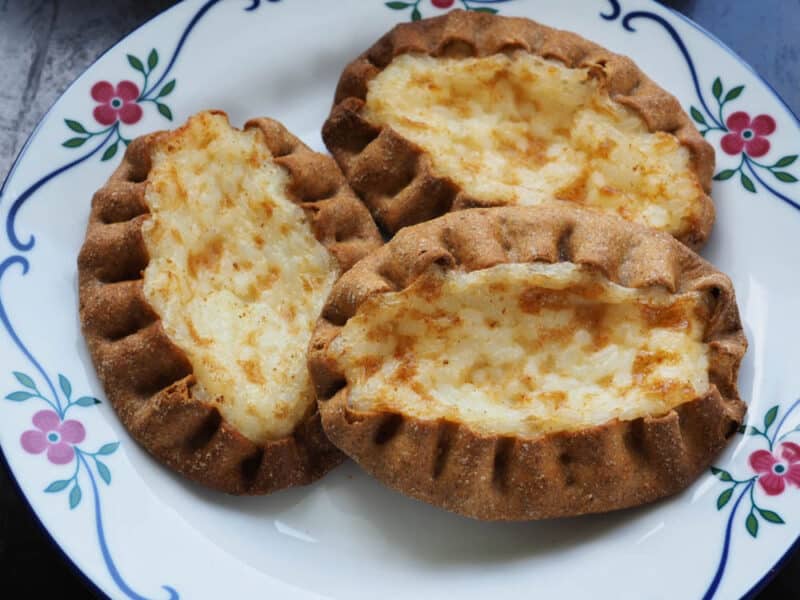
Naturally, the best place to get Karelian pie is in Karelia itself. One of the most popular types of karjalanpiirakka hails from North Karelia and is made by Anna-Liisa Sorsa. Made in Karelia’s Liperi community, you can find these traditional barley-filled pies over in Helsinki at Marian Konditoria in the Hakaniemi Market Hall or at Kahvila Mutteri in the Lauttasaari district.
Or you can try Männikkölän Pirtti’s Karelian pies from Nurmes in North Karelia. These handmade pies can be found in Helsinki’s Café Strindberg. They’re also available in bags for you to take home with you in numerous locations, like the Old Market Hall!
2. Korvapuusti
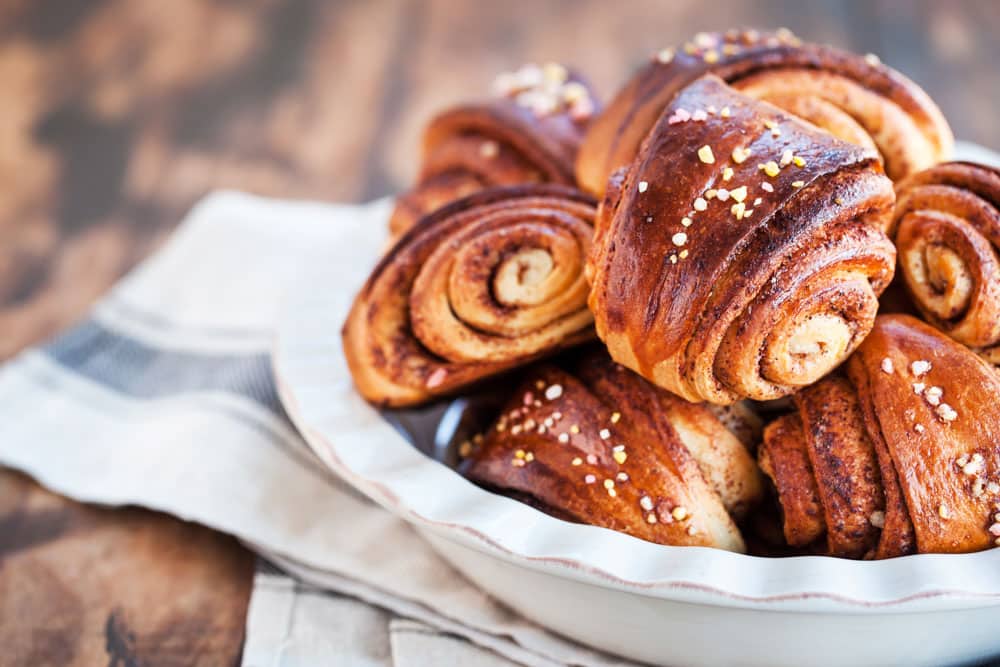
Korvapuusti is a traditional Finnish food that’s similar to a cinnamon bun, but if you were to order a cinnamon bun at a bakery, you might be looked at quite a bit strangely. And if you were to order a korvapuusti at a bakery, you may end up surprised that it’s nothing like an American cinnamon bun. If you were expecting Cinnabon, you’d definitely be confused!
Korvapuusti is made with traditional pulla dough. Pulla dough is cardamon-flavored, giving added layers to this unique treat. From there, the korvapuusti, which literally translates to “ear pulla,” is filled with cinnamon and butter and topped with pearl sugar, never granulated sugar and especially not frosting. It’s quite a bit less sweet than the cinnamon buns you’re most likely familiar with.
You can find korvapuusti in most bakeries, but our favorite can be found at Café Regatta, a charming red cottage by the sea in Töölö. There’s nothing like a fresh korvapuusti alongside one of the cafe’s hot chocolates. There’s limited seating inside, but outside, you can sit by the water and enjoy the long summer days or scenic winter scene.
3. Ruisleipä
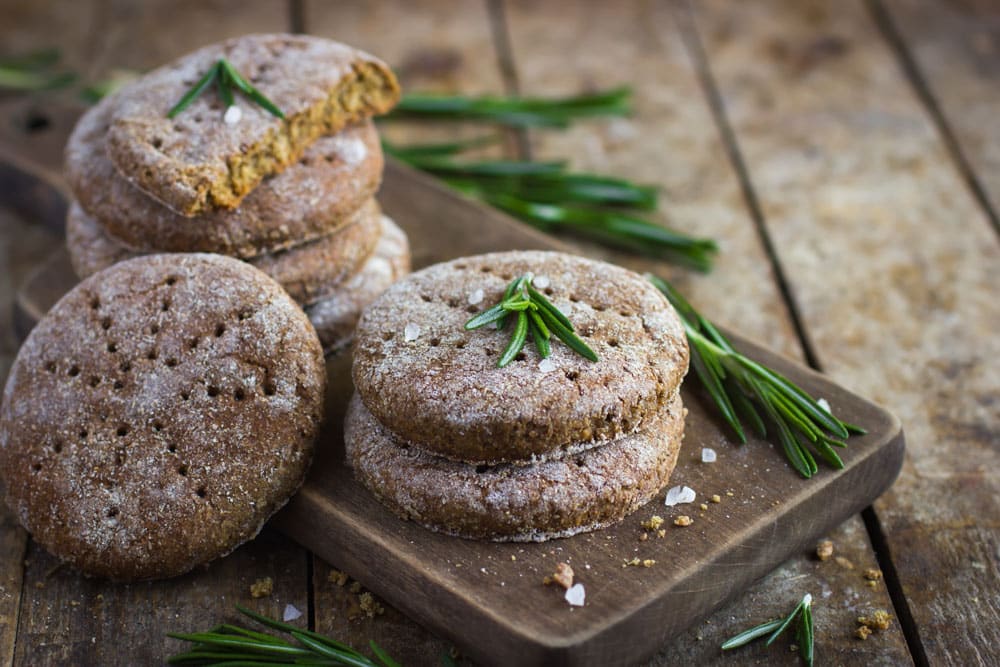
Ruisleipä, or rye bread, is a staple of Finnish cuisine. You might think rye bread is rye bread, but that’s not entirely true, especially in Finland. Finland’s version is dark and dense, being made with unique Finnish yeasts. It’s made with 100% rye flour, as opposed to American rye bread, which is only 20% rye.
This recipe was born out of the fact that Finland deals with short summers, cold winters, and poor soil conditions, in which rye grew well. When the recipe was developed, it came from the fact that few ingredients were available for a nation that was struggling economically.
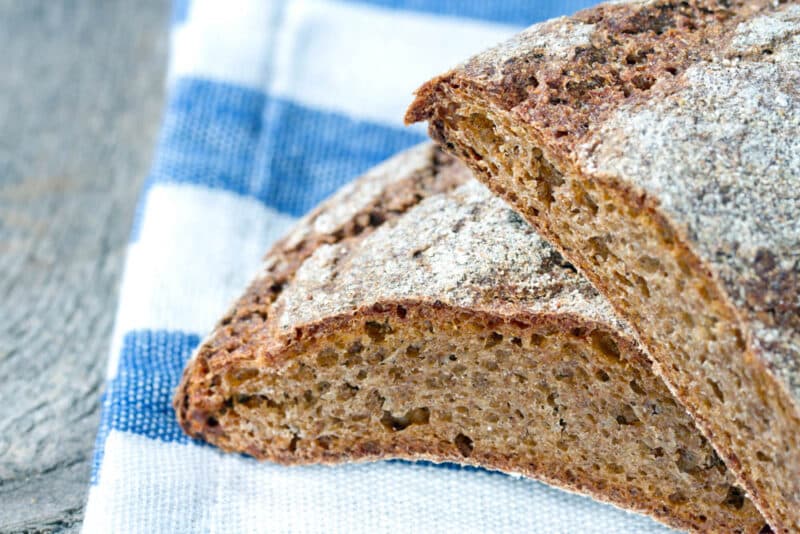
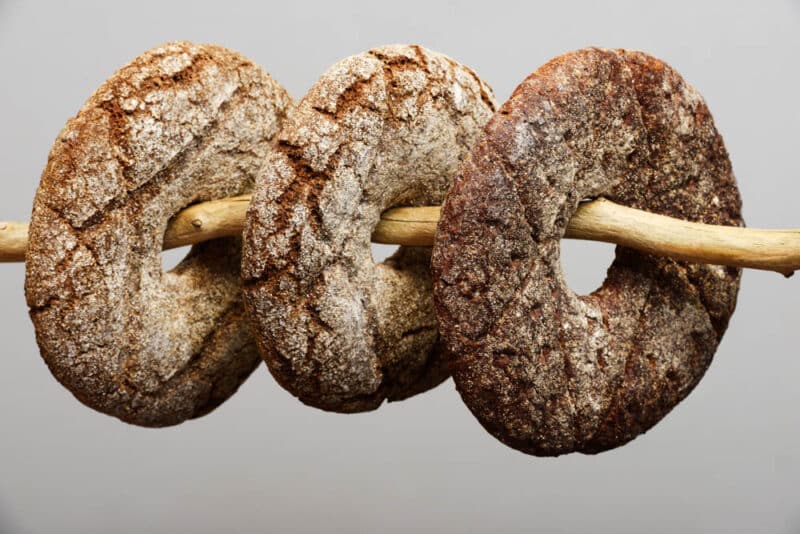
So, they used just leaven, salt, water, and rye. But the special part was the leavening agent, called leivän juuri. You can make your own if you have some time and patience, but for many Finns, the starter is passed down through generations.
Ruisleipä is Finland’s national food, so it’s quite literally everywhere. From bakeries to supermarkets, you’ll find this rye bread on every shelf and on every menu. You’ll likely taste quite a few on your trip to Finland!
4. Runebergin torttu
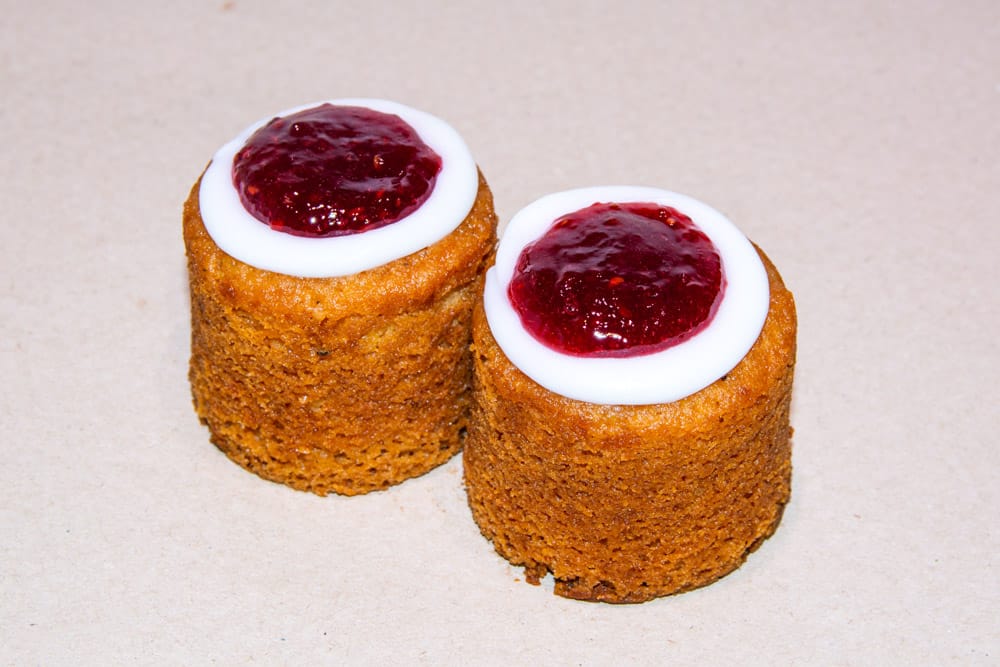
The origin of the Runebergin torttu, or the Runeberg torte, is a bit of a mystery. It’s named for Finland’s national poet, Johan Ludvig Runeberg, who called the scenic town of Porvoo home. One story claims that the torte was invented by Runeberg’s wife, Fredrika, while another legend says it was created by a local confectioner in Porvoo, Lars Astenius, whose customers included the Runebergs.
But whatever the story, it became a traditional Finnish food. But don’t expect that you can get a Runeberg torte any time of the year. This almond-flavored cake, decorated with jam and an icing ring and sometimes also flavored with rum or arrack, only comes out once a year. The Runeberg torte season aligns with Runeberg’s own birthday.
It’s not uncommon to see these tortes in bakeries starting as early as the end of the holiday season. Generally, you’ll find them in display cases around early January until early February, as Runeberg’s birthday was February 5. Throughout this time, you’ll see Runeberg tortes in nearly every bakery and food store, but there’s nothing like getting one in the town it was invented in.
Despite the torte being absent for most of the year in the rest of Finland, you can typically get it all year round in Porvoo. Café Fanny is one such charming cafe where you can find the famous torte.
5. Mustikkapiirakka
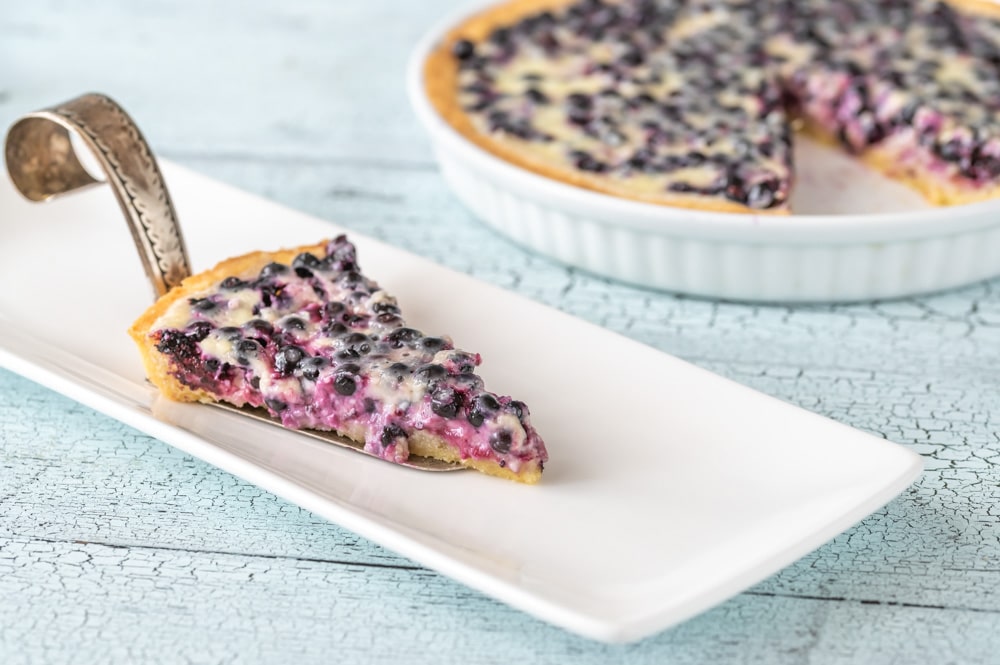
A traditional Finnish food in the summer months, mustikkapiirakka, or blueberry pie, is a bit of a misnomer, at least by the standards of what we consider to be a traditional blueberry pie. It’s not like what we’d picture a blueberry pie to be, with its lattice crust and sugary filling.
Mustikkapiirakka actually has more of a cheesecake consistency, though it does still have a pie-like crust on the sides and bottom. Traditional mustikkapiirakka also isn’t made with blueberries at all. It’s made with bilberries, the Nordic cousin of the blueberry that’s very similar. Also traditionally, it’s made with kermaviili, a natural yogurt-style milk, but it’s not uncommon to see it made with other milk products as well.
If you’re looking to dine with a view, you can’t go wrong ordering the mustikkapiirakka in Helsinki’s Café Engel. Located right in the historic Senate Square, you can enjoy your sweet treat with views of the Helsinki Cathedral. You may want to arrive early, as the blueberry pie often sells out the quickest of all their pastries!
6. Poronkäristys
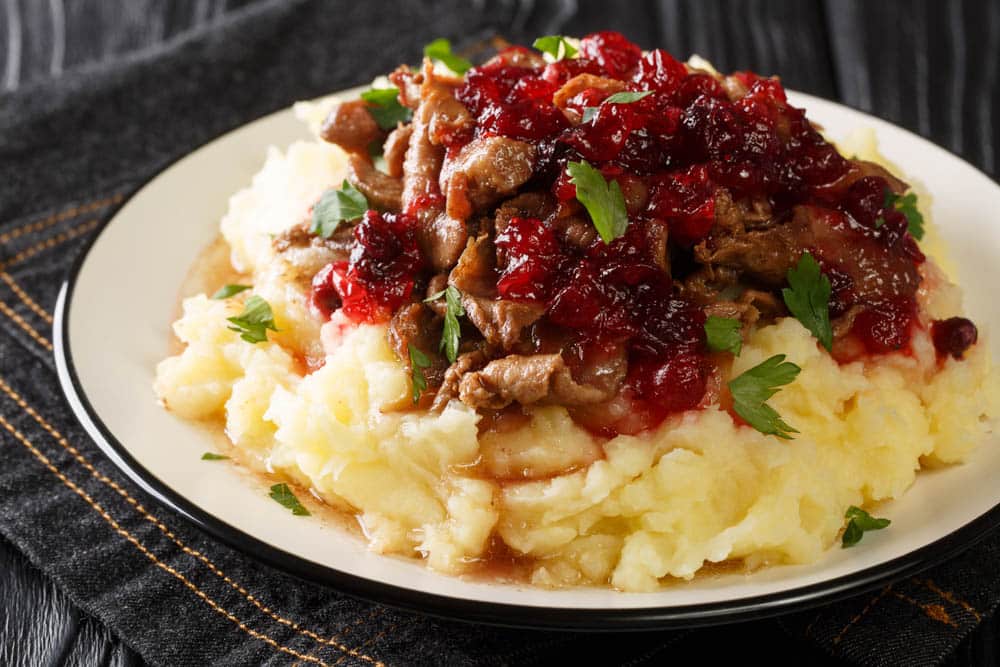
If you’re arriving from outside Finland, you might be surprised to see just how much reindeer is on the menu. Street vendors sell reindeer sausages and burgers, while you’ll see poronkäristys, or sauteed reindeer, on the menu in many upscale and casual restaurants.
Reindeer husbandry is one of the oldest livelihoods in the northern Lapland region of Finland. While there are many tourist attractions in Finland that will let you get up close to the reindeer, the main source of income that comes from reindeer husbandry is the meat.
The European Union actually granted a protected designation of origin to reindeer meat, dried reindeer meat, and cold-smoked reindeer meat from Lapland. Reindeer is the only meat in Finland to have this status, and it helps protect the quality of the meat.
You’ll find that Finns use the whole of the reindeer, so it’s not uncommon to also see reindeer leather goods or antlers for sale in shops throughout Finland. It’s often said that the only thing that’s not used from the reindeer is its soul, which is said to move on to become a guide for the people navigating the wilderness of Lapland.
When it comes to poronkäristys, which is typically served with mashed potatoes and lingonberries, you’ll likely want to try it when you’re up north. One of the best places to get it is Nili in Rovaniemi. However, if you find yourself down south in Helsinki, our favorite variation of the dish can be found at Kolme Kruunua.
7. Kalakukko
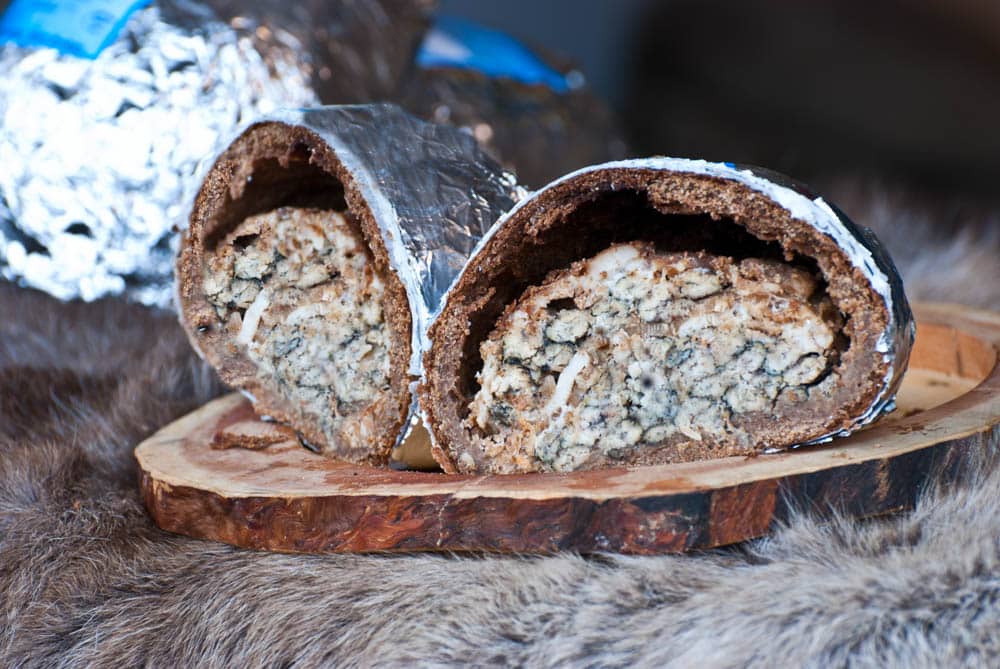
Technically speaking, kalakukko, a traditional Finnish food, translates to “fish cock,” or basically fish rooster. But in Karelian, kukko typically refers to a pie or pastry. And “fish pastry” sums this dish up pretty well.
Kalakukko traditionally is filled with bacon and vendace, a small-boned lake fish from eastern Finland. Bakers would start with a flattened rye dough, which they would then stuff with whole, headless vendace before covering them with raw bacon strips. As the pork heats, the fat melts over the fish, softening the bones and creating a briny filling.
This dish was originally invented in the Savonia region, where it’s still particularly popular. In fact, the city of Kuopio hosts an annual kalakukko baking contest. You’ll find plenty of kalakukko in Kuopio’s bakeries, but the most famous place to get the dish is Kalakukkoleipomo Hanna Partanen, where they’ve been perfecting it for more than a century.
Here, the bakers remove the dish from the oven after 20 minutes to patch any cracks, helping to create the best bread. It takes them 10 hours to make the dish, and halfway through, they fill a syringe with melted butter to inject into the heart of the pastry.
8. Lohikeitto
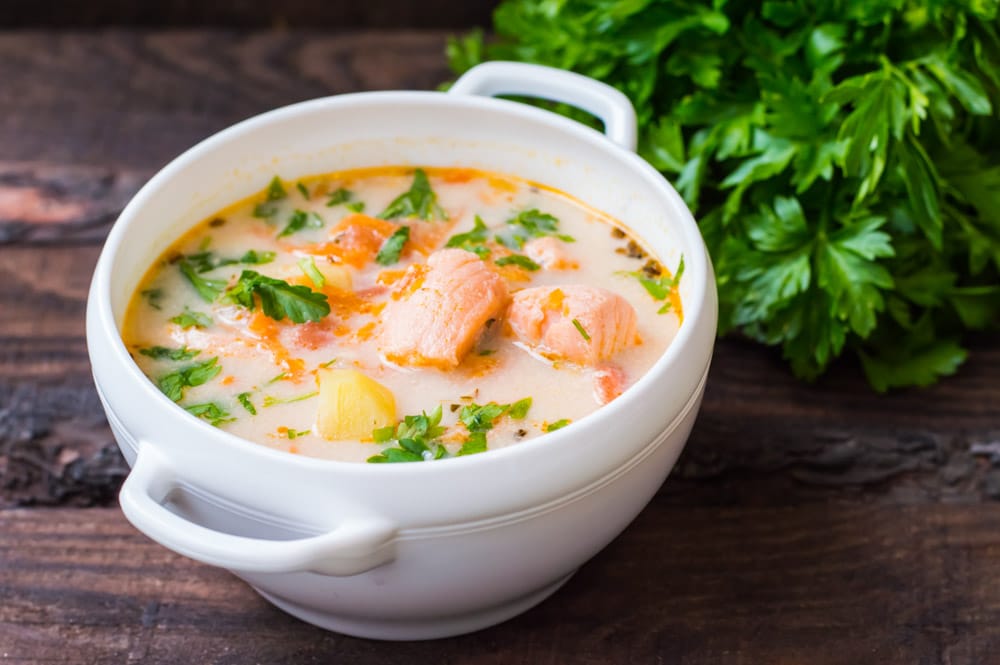
Lohikeitto, or salmon soup, is a very popular food in Finland. Though it originated in Finland, you’ll find it throughout the Nordic countries. It’s creamy, hearty, and perfect for a long winter day. Considering that the Lapland region’s winters can reach as low as -40°F, it’s understandable why such a dish is prevalent in this area of Finland.
Salmon is a staple of Finnish cuisine in Lapland, as the fish is in abundance in the River Tana, which flows through it. For this dish, cream is the base, and it’s filled with salmon chunks, leeks, and potatoes before being garnished with dill.
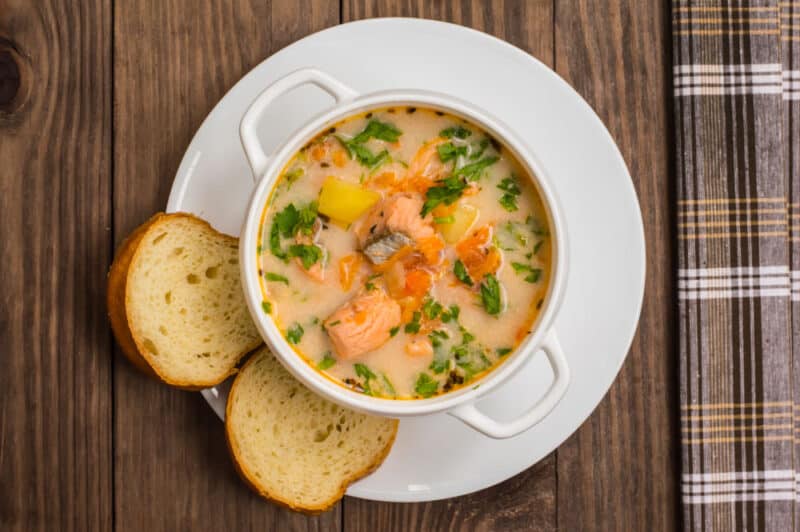
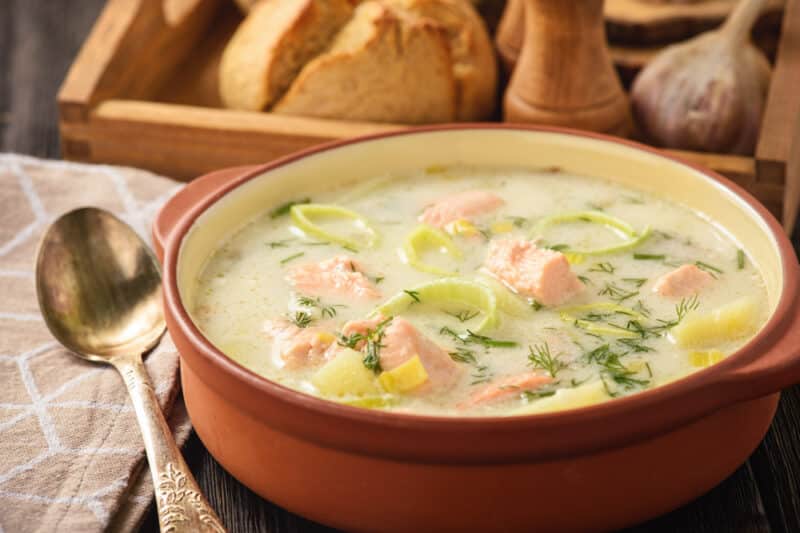
But you’ll still find lohikeitto in areas outside of Lapland. Some highlights of Lapland lohikeitto include the versions you’ll find at Lapland Restaurant Kotahovi, right in the adorable Santa Claus Village, or Roka Kitchen and Wine Bar, also in Rovaniemi. But if you’re in Helsinki, try Juttutupa, which is also one of the oldest restaurants in the city.
9. Lakkalikööri
Lakkalikööri, or simply lakka, isn’t a Finnish food, but it is a part of Finnish cuisine. And it’s admittedly one of my favorite parts. This liqueur is made from cloudberries, wild berries grown in the far reaches of the Northern Hemisphere. Cloudberry season typically begins in mid-to-late July for the southern parts of Finland, while the northern areas get their season in August.
Cloudberries are used all over Finland, from jams to desserts. On their own, they’re often bittersweet, but you’ll find that lakka is particularly sweet. It’s fairly divisive. Either people are very into the overly sweet taste, or they’re very much not.
You’ll find lakka in many bars and liquor stores, but only a handful of companies are making it. You don’t really farm cloudberries. They grow on their own. When they’re harvested for lakka, they’re steeped in grain alcohol for two to six months and soaked in oak barrels. Then, natural sweeteners and spices are added.
If you’re visiting Finland, you’ll likely find the most popular brand of lakka, Lapponia, in liquor stores. But there are other varieties out there if you search hard enough, like Lignell & Piispanen, which is famous for maintaining its pre-Prohibition recipe. Founded in 1852, this brand has the oldest mass-marketed lakka recipe in Finland.
10. Lihapiirakka
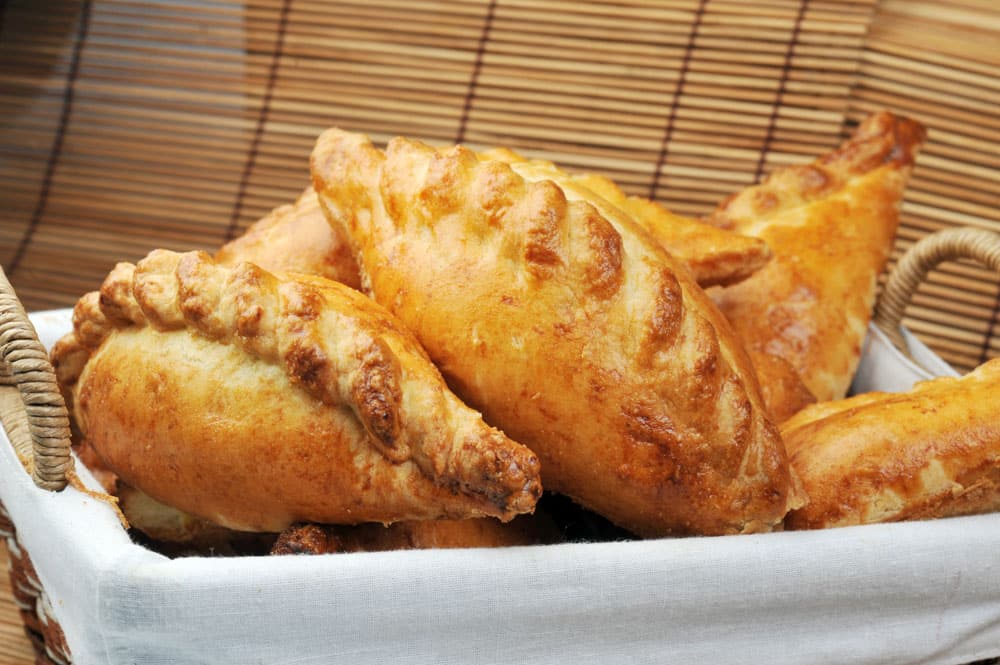
Lihapiirakka, or meat pie, is a popular Finnish food that you’ll typically find being sold by street vendors or in markets. Made with yeasted bread dough, they’re usually stuffed with minced meat, onions, spices, and rice before being deep-fried.
This savory pastry has Russian roots. Before being an independent nation, Finland was under Swedish rule until the Finnish War, which was fought between 1808 and 1809. Russia emerged victorious, and Finland only gained autonomy in 1917.
Finnish culture was greatly influenced by both countries, and the lihapiirakka is only one such example, as it is an adaptation of the Russian piroshki. The main difference is that the Finnish version also uses rice in the filling.
Lihapiirakka is a perfect on-the-go treat, and if you’re over near Helsinki’s Market Square, be sure to pick one up from Toripojat, a cute little tent cafe serving up coffee and pastries. Although you can get meat pies from many street vendors, their version is one of our favorites.
11. Lasimestarin silli
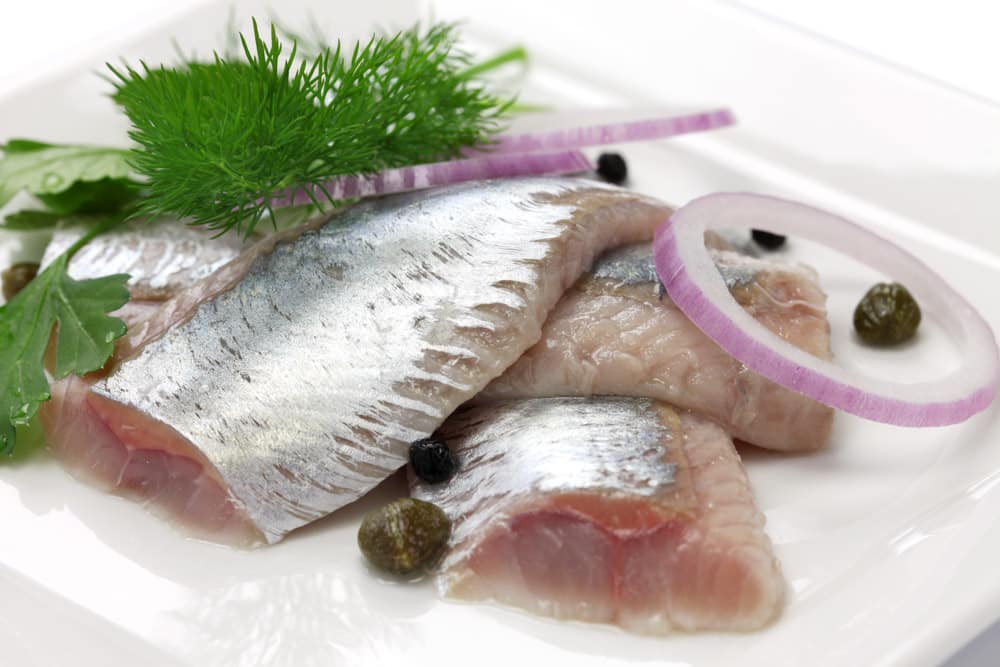
Lasimestarin silli, or marinated herring, is bound to raise a few eyebrows, but it’s a staple of Finnish cuisine, especially around the holiday season. Generally, herring is caught in the summer and left to marinate in water, vinegar, sugar, and some spices until the winter.
As you can likely tell from this list, fish is a major part of the Finnish diet, and perhaps there’s no fish more commonly found on Finns’ plates than herring, which makes a lot of sense when you consider that Baltic herring is the most caught fish in Finland’s coastal waters.
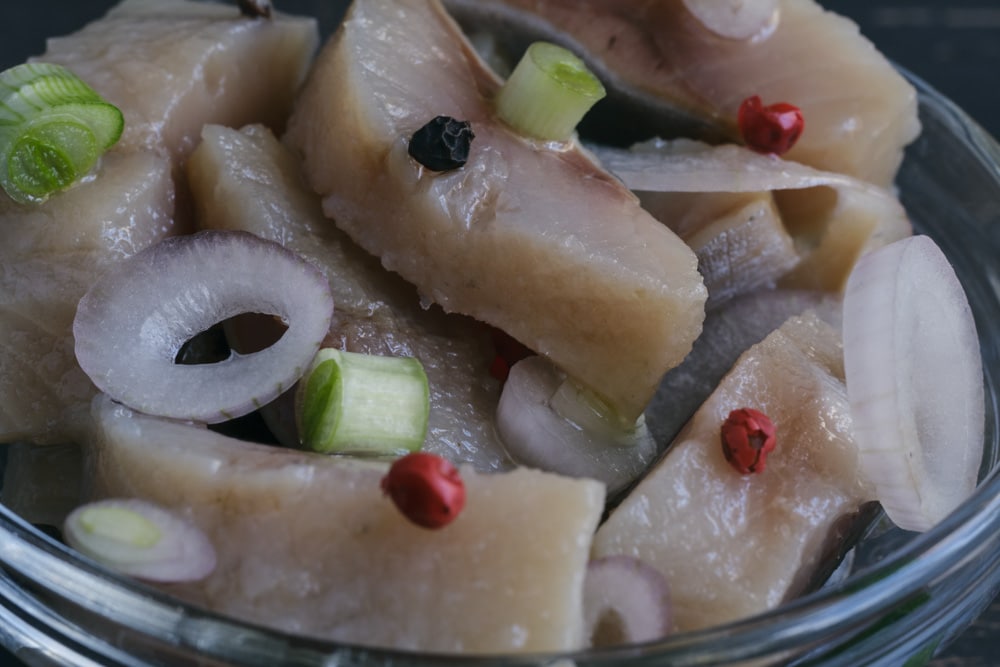
Baltic herring differs from Atlantic herring because the brackish water in the Baltic Sea makes these creatures grow more slowly. This fact makes the fish less fatty, so you’ll likely find that trying herring in Finland is different from eating herring in the US.
Finns eat herring salted, fried, baked, smoked, pickled, and basically any way you could think of. So you don’t have to have it marinated if you’re not into the unique flavor.
If you’re in Helsinki in October, be sure to stop by the Helsinki Baltic Herring Market, a tradition that dates back to 1743, where you’re bound to find tons of marinated herring. If you’re visiting outside of the market dates, swing by the Old Market Hall, where you’ll find plenty of varieties of herring available to try.
12. Leipäjuusto
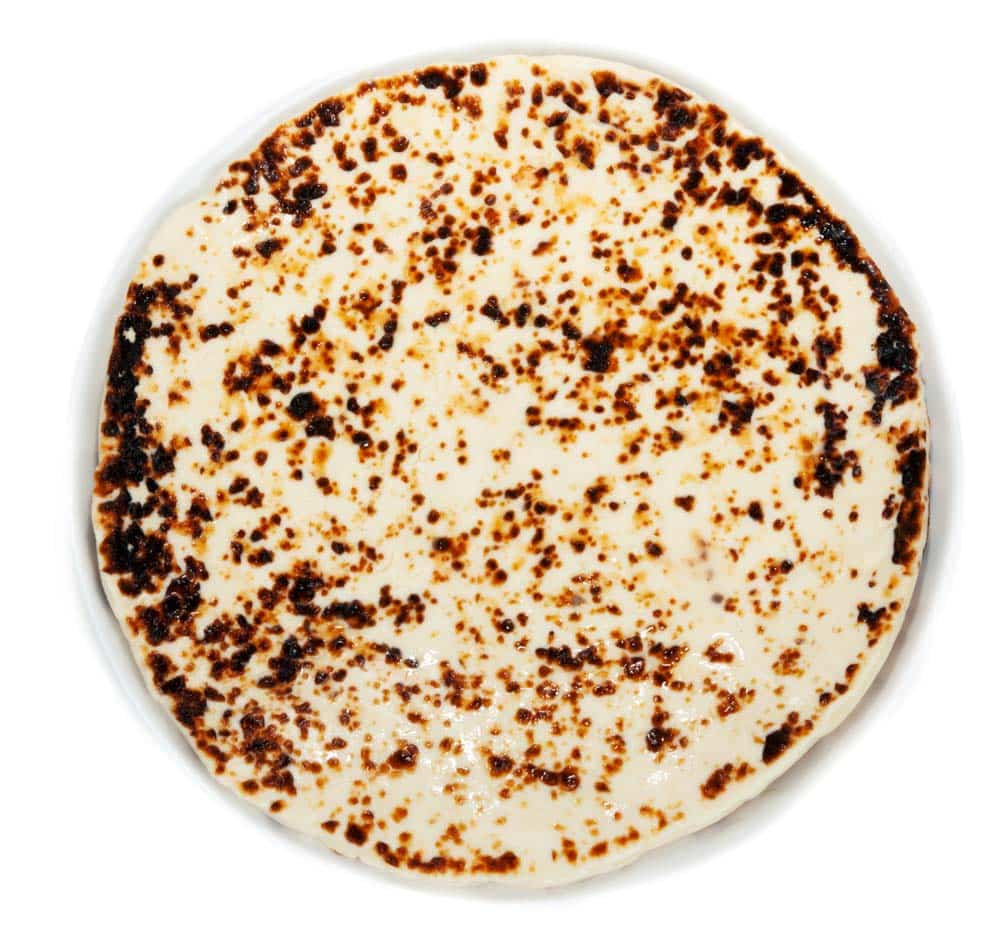
Known in the US as Finnish squeaky cheese, this type of cheese goes by a lot of names. In Kainuu, it’s juustoleipä, but in Ostrobothnia or Lapland, it’s usually leipäjuusto. In the first case, the name translates to “cheese bread,” while the second means “bread cheese.”
As the American name implies, this cheese tends to squeak against your teeth as you bite into it. Finnish squeaky cheese is made from cow’s beestings, rich milk that comes from a cow that has recently given birth. In some cases, though, it may be made from a reindeer or goat instead.
You can eat it in a variety of ways, but it makes for a wonderful dessert, especially when it’s warm and paired with cloudberry jam and either cream or ice cream. You can find it on the dessert menu of many restaurants, but the leipäjuusto at Kolme Kruunua is a must.
There you have it! 12 traditional foods in Finland you have to try. What’s your favorite part of Finnish cuisine? Let us know in the comments!
Planning a trip to Finland? Check out our favorite books and travel guides!
SHARE THIS ON PINTEREST
